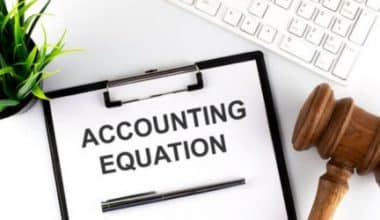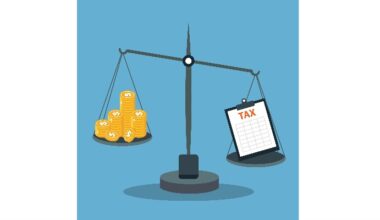Inventory valuation is essential in calculating the cost of an organization’s goods sold. It aids in calculating the cost of goods sold by comparing the inventory at the beginning and end of a given period using the formula: COGS = Beginning Inventory + Additional Inventory-Ending Inventory. In this article, we will focus on how to calculate the cost of goods sold from an income statement, managerial accounting, and balance sheet. But let’s understand the meaning of the cost of goods sold.
What Is Cost of Goods Sold
The cost of goods sold (COGS) is also known as the cost of revenue or the cost of sales in some circles. It is any cost relative to the production of goods sold or the cost of inventory purchased to sell to customers. It includes everything from the raw material’s purchase price to the costs of transforming it into a product and packaging it; as well as the freight charges you pay to have it delivered to store shelves.
However, it excludes overhead expenses related to general business operations, such as rent advertising, accounting, legal fees, and managerial salaries. The cost of goods sold is reported on a company’s income statement. The goal is to assist a company in determining its gross profits. It is also an important metric for companies to understand how well a company can manage the cost of labor and supply in manufacturing. Furthermore, a company’s cost of goods sold reported at tax time can determine how much it can deduct as a business expense.
What Are Included in Cost of Goods Sold?
The costs included in the cost of goods sold are simply any expenditures incurred by a business to create the commodities being sold. Direct labor, raw materials, freight-in charges, purchasing allowances, and factory overhead are the most likely expenditures to be included in this category.
What Are the 3 Main Components of Cost of Goods?
COGS consists primarily of direct expenses such as production costs, inventory acquisition costs, labor, and raw materials.
Income Statement
The income statement is one of three key financial statements for reporting a company’s financial performance over a specific accounting period. Along with the balance sheet and the statement of cash flows.
The income statement, also known as the profit and loss statement or the statement of revenue and expense; primarily focuses on the company’s revenues and expenses during a specific period.
How to Calculate the Cost of Goods Sold From an Income Statement
To calculate the cost of goods sold from an income statement, add together the various direct costs necessary to generate a company’s revenues. Importantly, COGS are the costs relative to the generation of revenue, such as the company’s inventory or labor costs that can be attributed to specific sales. Inventory is a particularly important component of COGS, and accounting rules allow for a variety of approaches to include it in the calculation.
Managerial Accounting
Managerial accounting is the interpretation of accounting information by identifying, and evaluating a company’s daily operations. This assists business leaders in making sound financial decisions and efficiently managing their daily operations. To calculate managerial accounting for the cost of goods sold. Managerial accountants must analyze various events and operational metrics to convert data into useful information that company management can use in decision-making. They intend to provide detailed information about the company’s operations; by analyzing each product line, operating activity, facility, and so on.
In contrast to financial accounting, which focuses on the coordination and reporting of the company’s financial transactions to outsiders (e.g., investors, lenders), managerial accounting focuses on internal reporting to aid decision-making. However, managerial accountants use some techniques to determine the cost of goods sold in an income statement or balance sheet. These techniques include:
#1. Margin Analysis
The primary focus of margin analysis is on the incremental benefits of optimizing production. Margin analysis is a fundamental and necessary technique in managerial accounting. It includes determining the optimal cost of goods sold for the company’s products by calculating the net profit.
#2. Constraint Analysis
Constraint analysis is the analysis of a company’s manufacturing units; which helps to identify major constraints, inefficiencies caused by these constraints; and their impact on the company’s ability to generate revenues and profits.
#3. Capital Budgeting
Capital budgeting is concerned with the analysis of information necessary to make capital expenditure decisions. Managerial accountants calculate the net present value (NPV) and the internal rate of return (IRR) in capital budgeting analysis to assist managers in making decisions.
#4. Product Costing and Inventory Valuation
Inventory valuation entails determining and analyzing the actual costs associated with a company’s products and inventory. In general, the process enables the managerial accountant to calculate the allocation of overhead charges; as well as account for the direct costs associated with the cost of goods sold (COGS).
#5. Trend Analysis and Forecasting
Companies use trend analysis and forecasting to identify patterns and trends in product costs. As well as identifying unusual variations from forecasted values and the reasons for such variations.
What Is the Formula for Calculating Cost of Goods Sold?
The cost of goods sold is how much it costs a business to purchase or make its items. Start with the beginning inventory value, add any purchases or other costs, then subtract the final inventory value to compute the cost of goods sold.
Does Cost of Goods Sold Include Inventory?
The value of a company’s inventory is determined by its cost and is shown in the balance sheet. When an item is sold, its cost is deducted from stock and recorded as cost of goods sold on the income statement. On the income statement, the cost of goods sold will most likely take up the most space.
Balance sheet
The balance sheet is one of the three basic financial statements and is essential for both managerial accounting and financial reporting. The balance sheet shows the total assets of the company as well as how the assets are financed, either through debt or equity. It is also known as a net worth statement or a statement of financial position. The balance sheet is built around the basic equation: Assets = Liabilities + Equity.
As a result, the balance sheet has two sides sections. The balance sheet’s left side lists all of a company’s assets. The balance sheet on the right side details the company’s liabilities and shareholders’ equity.
There are two types of assets and liabilities: current assets/liabilities and non-current (long-term) assets/liabilities. Inventory, cash, and trades payables are placed in the current section; before non-current accounts such as Plant, Property, and Equipment (PP&E) and long-term debt.
There are Two Methods Used to Calculate the Cost of Goods Sold From an Income Statement, Managerial Accounting, and a Balance Sheet. They include:
- Method 1. This method implies that you add the beginning inventory to the purchases made during that period and subtract the ending inventory. Beginning inventory is the inventory that was leftover from the previous year that was not sold; as well as any production or purchases for materials and labor directly used to manufacture or retail a company’s goods. Ending inventory are current assets that are not in the beginning inventory. The COGS, then, is the cost of all items a company manufactures or purchase during the current fiscal year.
- Method 2: You can calculate COGS using this method by measuring inventory changes. For example, if a company manufactures or purchases 200 units; but inventory increases by 50, the cost of goods sold is 150 units.
Here’s a Rundown of the COGS Calculation Procedure:
- Determine your expenses. List all of the additional costs associated with your products, whether you manufacture them or buy and resell them, including direct costs (those associated with purchasing or manufacturing the product) and indirect costs (storage, facilities, labor).
- Determine your inventory. Your inventory includes the products you currently have on hand as well as the raw materials and supplies necessary to make more. Include the freight and manufacturing costs (or invoices) for any new products added to your inventory and an estimate for any spoilt inventory items.
- Inventory valuation. Apply one of the three accounting methods to determine the value of your stock; first-in, first-out (FIFO), which measures value by the oldest items in your inventory; last-in, first-out (LIFO), which determines value by the newest items; and average cost, which simply collates an average price for each item, irrespective of manufacturing date.
- Calculate to determine the COGS. Finally, you can calculate your COGS by using all of this data to compute COGS. However, you can consider hiring a tax professional to tabulate this data or using a spreadsheet to detail the figures.
What Expenses Are Not Included in COGS?
All additional expenses that aren’t directly related to making the product or providing the service are considered non-COGS. All the money needed to keep a business running has to come from somewhere, and that includes things like a physical location, utilities, salaries for management, advertisements, distribution, paperwork, and more.
What Is the Difference Between Cost of Sales and Cost of Goods Sold?
The main difference between the cost of sales and the cost of goods sold is that the cost of goods sold looks at the direct costs of making the goods, while the cost of sales looks at indirect costs.
Accounting Software and Cost of Goods Sold
Calculating COGS can be difficult. It necessitates that a company maintains complete and accurate records for the GAAP calculations reported on financial statements as well as to support a tax return. However, inventory management in a business must be precise, both physically and financially. And regardless of whether a company employs the FIFO, LIFO, or both methods of inventory valuation, the business must track purchases and production costs during the year.
When volumes and product lines begin to grow, all of the above can become more complex. A comprehensive accounting system connected to inventory management will be the best approach to calculating COGS for companies with many SKUs.
Knowing your COGS is vital to improving and maintaining profitability; So it’s critical to understand its components and know how to calculate the cost of goods sold in a balance sheet correctly. COGS also reveals the true cost of a company’s products, which is critical when pricing to achieve high unit margins.
Calculating COGS can be difficult, particularly as the business grows more complex; an accounting system integrated with inventory management software can reduce the effort required while also ensuring accuracy.
How to Calculate Cost of Goods Sold FAQs
How do you find COGS without ending inventory?
To find the cost of goods sold in an ending inventory, multiply the gross profit percentage by the sales. Then, subtract the cost of goods available for sale from the cost of goods sold.
What is an example of managerial accounting?
An example of managerial accounting information is frequently presented in the form of non-financial metrics. For example, an athletic wear company could track the percentage of deficient goods made or the percentage of on-time deliveries to customers.
Is labor cost included in COGS?
COGS/COS includes both direct labor costs and any direct material costs incurred in the production or manufacturing of a company’s products.
What are the 3 types of balance sheets?
The three main components of a balance sheet are assets, liabilities, and shareholder equity.






